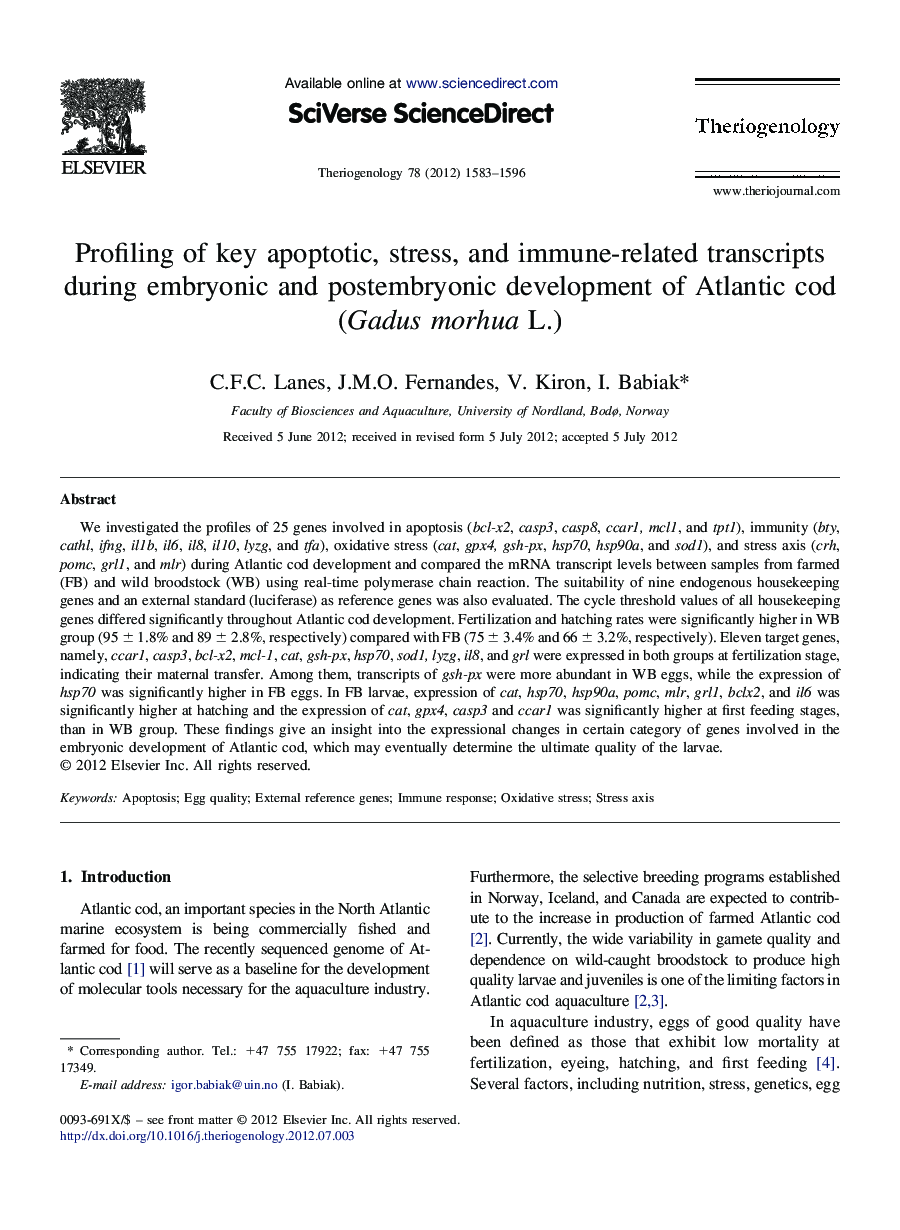| Article ID | Journal | Published Year | Pages | File Type |
|---|---|---|---|---|
| 10892648 | Theriogenology | 2012 | 16 Pages |
Abstract
We investigated the profiles of 25 genes involved in apoptosis (bcl-x2, casp3, casp8, ccar1, mcl1, and tpt1), immunity (bty, cathl, ifng, il1b, il6, il8, il10, lyzg, and tfa), oxidative stress (cat, gpx4, gsh-px, hsp70, hsp90a, and sod1), and stress axis (crh, pomc, grl1, and mlr) during Atlantic cod development and compared the mRNA transcript levels between samples from farmed (FB) and wild broodstock (WB) using real-time polymerase chain reaction. The suitability of nine endogenous housekeeping genes and an external standard (luciferase) as reference genes was also evaluated. The cycle threshold values of all housekeeping genes differed significantly throughout Atlantic cod development. Fertilization and hatching rates were significantly higher in WB group (95 ± 1.8% and 89 ± 2.8%, respectively) compared with FB (75 ± 3.4% and 66 ± 3.2%, respectively). Eleven target genes, namely, ccar1, casp3, bcl-x2, mcl-1, cat, gsh-px, hsp70, sod1, lyzg, il8, and grl were expressed in both groups at fertilization stage, indicating their maternal transfer. Among them, transcripts of gsh-px were more abundant in WB eggs, while the expression of hsp70 was significantly higher in FB eggs. In FB larvae, expression of cat, hsp70, hsp90a, pomc, mlr, grl1, bclx2, and il6 was significantly higher at hatching and the expression of cat, gpx4, casp3 and ccar1 was significantly higher at first feeding stages, than in WB group. These findings give an insight into the expressional changes in certain category of genes involved in the embryonic development of Atlantic cod, which may eventually determine the ultimate quality of the larvae.
Related Topics
Life Sciences
Agricultural and Biological Sciences
Animal Science and Zoology
Authors
C.F.C. Lanes, J.M.O. Fernandes, V. Kiron, I. Babiak,
